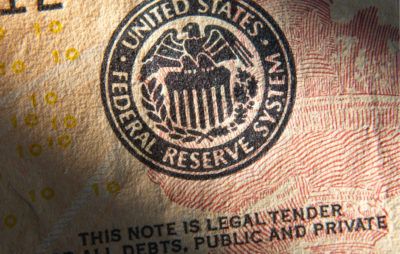Does the Fed Really Monetize Government Debt?
| If monetizing debt is understood to mean printing money to pay for government deficits, then the Fed is guilty.
The basics are quite simple. The federal government issues and the Fed buysinterest-bearing debt certificates. The Fed pays for these securities by creating digits on a computer that represent dollars. In this Age of Ron Paul, more people are learning that the digits do not represent savings borrowed from the public. The Fed is not a financial intermediary; it is a money factory. And while factories under capitalism produce for the benefit of the masses, this factory cranks out dollars for the politically-favored, to the detriment of the masses. The Fed is thus an anti-capitalist, anti-free market institution. The 12 members of the FOMC decide how much money they need and create the digits on-the-fly, from nothing. The idea of Bernanke or other Fed chairmen printing money is a metaphor, but an accurate one. It’s simply more convenient for the Fed to create digits than to print money. It might be objected that this is not the equivalent of printing money because fiat money is not an interest-bearing asset. By purchasing government bonds, the argument runs, the Fed collects interest from the Treasury, thus providing an additional windfall for the central bank, which also collects the principal. The government would’ve been better off issuing a service order to its “money factory” and having it print the amount demanded and avoid the interest payments. In other words, instead of Bernanke creating digits, have Geithner create them. Simply printing money to pay one’s debts, though, even when done by a legitimate government, runs the risk of being seen as such. Even eight-year-olds know a counterfeiter is a crook who prints money then spends it. It’s always possible kids today would survive government schools to adulthood, still believing the emperor is stark naked, and that could lead to revolution. Most adults, of course, have little interest in where money comes from as long as it buys things at the mall, and most economists have a habit of not biting the hand that feeds them, and thus lend support for an “independent” Fed. If cheating is the goal, what’s needed is a circuitous means of printing money to keep the public befuddled and indifferent, and this is the reason for having a central bank. It’s true, the Fed collects interest on the government securities it holds, but it gives most of it back to the Treasury. After deducting for operating and other expenses, it pays member banks a 6% dividend on the stock they hold in their reserve banks, which in 2010 amounted to $1.5 billion. (By law, member banks must subscribe to stock in the Federal reserve bank of their district equal to 3% of their capital, at a fixed rate of $100 per share, with another 3% subject to call of the Board of Governors. See here.) The remaining balance of the Fed’s interest receipts, including interest from assets other than U.S. bonds, is remitted to the Treasury at the end of each fiscal year. In 2010, this amounted to $79.3 billion. (See the 2010 annual report, pg. 130, Table 4 for details.) Thus by giving the Treasury all the revenue it receives after deducting for expenses and dividends, the Fed in effect is granting the government loans at nearly zero interest. As for the principal, the Fed simply keeps it on their books. It could demand payment from the government, but so far it hasn’t. If the Fed ever decides to defend the value of the dollar, unrestrained government as we’ve known it is doomed. As we can see the government, in issuing bonds, is getting money for virtually nothing, then spending it. As kings of old did when they literally ran the printing presses to pay for expenses beyond what they collected in taxes, today’s government does the same but through the esoteric world of central banking. Why would bankers agree to such an unprofitable arrangement? The commercial banks make their profits through the protection afforded by the government cartel of central banking. Fractional-reserve banking has been the norm in banking for thousands of years, but while it can be very profitable it is also subject to instant disaster when banks over-inflate. Under central banking in a fiat paper money regime, member banks inflate at a uniform rate and thus avoid currency drains from other banks and runs from the public. And since money is paper or digits representing paper, the central bank, with its monopoly of the note issue and commodity money outlawed, can generate as much money as needed should problems arise. As cozy as this arrangement is, most bankers don’t seem to recognize that central bank inflationary policies (“easing” or “accommodative”) will eventually bring an end to their scheme. The money will become so worthless people stop using it. The solution is to separate money and banking from the government, completely and permanently. By George F. Smith |










